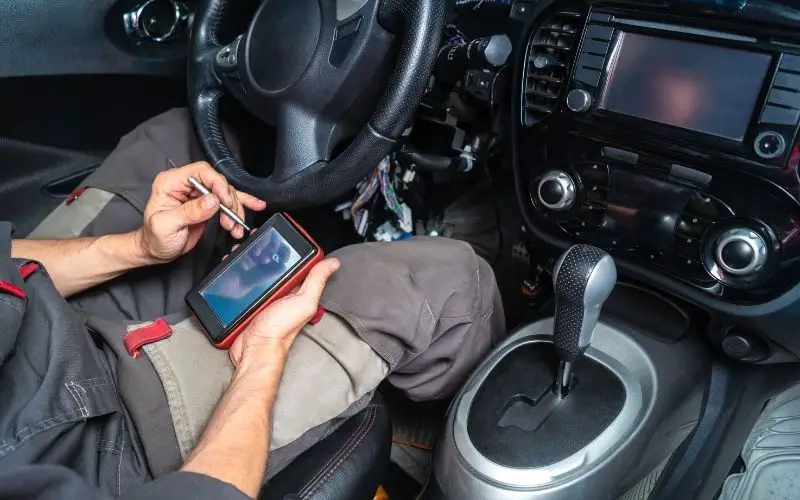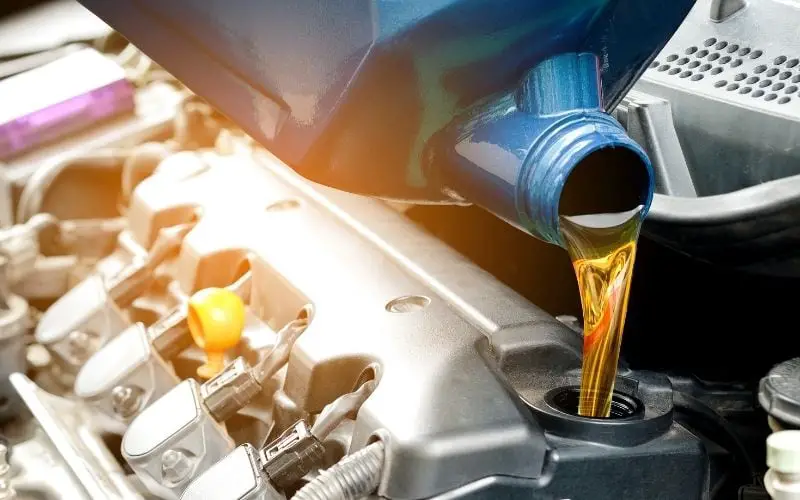OBD2 Scanners is reader-supported. When you buy through links on our site, we may earn an affiliate commission.

What are diagnostic trouble codes?
When a problem is detected, your car’s system can register that as its unique code. This diagnostic trouble code causes the Check Engine Light on your dashboard to turn on, and it won't turn off permanently unless you fix the root of the issue.
History of OBD codes
In 1988 The California Air and Resource Board - Commission on Air Quality issued regulations requiring an onboard diagnostics monitor (OBD) to all cars sold in California.
During that time, OBD1 is the system used to monitor emissions causing electrical component circuit problems. The problem with OBD1 is that they are manufacturer-specific. Thus, professional mechanics have to work on several lists so they can work on several cars.
The National Institute for Automotive Service Excellence proposed to unify the codes, thus the requirement of the OBD2 system in cars manufactured from 1996 onwards. As a result, the diagnostic port also became standardized across models. OBD2 covers the powertrain, body, and chassis.
What are the types of diagnostic trouble codes?

Kinds of Diagnostic Trouble Codes
- Generic DTCs. Apply in standard requirements for OBD 2 and EOBD 2 to all official automakers.
- Manufacturer-specific DTCs. Exclusive to manufacturers and do not appear in most published DTC lists. Car manufacturers give this list of codes to ASE-certified mechanics so they can work on these issues.
Classification of Diagnostic Trouble Codes
- Pending Codes. These are codes that the OBD system detects once but does not turn the CEL on because the OBD detects it as random or not serious.
- Confirmed Codes. When the OBD system detects an error for the second time, the pending code (detected once) becomes a confirmed code. This code will turn on the CEL and needs action to turn the CEL off.
- Permanent Codes. Usually related to emissions, you cannot clear permanent codes with an OBD scan tool. However, it may be clear on its own after fixing the source of the DTC.
- Enhanced Codes. Enhanced codes include ABS, SRS, transmission, body control module, airconditioning, stereo, and transfer case. These codes are usually manufacturer-specific.
How do I read trouble codes?
For diagnostic purposes, your car needs a code reader or scanner. They are available as scan tools, mobile apps, or computer software usually used by professional mechanics. Plug the code reader or the wireless adapter (Bluetooth or WiFi) into the OBD2 diagnostic port and let it do its magic.
You should get a five-character alphanumeric code followed by a description or definition of the code. Basic readers, however, give only the code, leaving you to look up the code on lists or databases.
How do I Interpret trouble codes?

The first character (Letter)
The codes of OBDII begin with the letter denoting a defective part of the vehicle.
- P (Powertrain) - Covers the motor, the gearbox, and the related accessories.
- B (Body) - Covers all codes present in passenger compartments.
- C (Chassis) - Covers mechanical parts and functions, such as steering suspension and brake
- U (User Network and Vehicle Integration) - covers other aspects of the car, such as module failures and losses of communication
The second character (number)
The next character on the DTC is a number from 0 or 1. The number 0 indicates generic codes, while 1 indicates manufacturer-specific codes. In rarer cases, the numbers 2 and 3 appear, denoting more manufacturer-specific codes.
The third character (number/letter)
The third character may be a number or another letter and denotes which car system has a malfunction:
- 1 - Fuel or air metering system codes
- 2 - Fuel or air metering injection system codes
- 3 - Ignition system codes
- 4 - Emissions system codes
- 5 - Vehicle speed controls and idle control system codes
- 6 - Computer output circuit
- 7, 8, and 9 - Transmission or gearbox-related codes
- A, B, C - Hybrid propulsion codes
The fourth and fifth characters (number)
The fourth and fifth digits (00 - 99) pinpoint the specific source of the malfunction or fault code.
How are trouble codes set?
OBD2 systems look at all functions related to pollution from outside. It also monitors fuel, emissions, catalysts, and evaporative energy systems when the car is in use. The check engine light (CEL) or Malfunction Indicator Light (MIL) turns on when the OBD system detects an error.
Caution: Don't rely on DTCs alone
- Do not replace parts or components of the car, unless recommended by the manufacturer in the user manual.
- Some DTCs are not always accurate, especially manufacturer-specific codes, and you're using a basic scan tool only.
- Always check with the user's manual.
- When in doubt, enlist the help of a professional mechanic.
List of Car Diagnostic Codes
| Common Powertrain | Causes | Symptoms |
|---|---|---|
| DTCs | ||
| P0135: O2 Sensor Heater Circuit Malfunction (Bank 1, Sensor 1) |
|
|
| P0141: O2 Sensor Heater Circuit Malfunction (Bank 1, Sensor 2) |
|
|
| P0171: System Too Lean (Bank 1) |
|
|
| P0174: System Too Lean (Bank 2) |
|
|
| P0200: Injector Circuit Malfunction |
|
|
| P0218: Transmission Over Temperature Condition |
|
|
| P0300: Random/Multiple Cylinder Misfire Detected |
|
|
| P0301: Cylinder 1 Misfire Detected |
|
|
| P0302: Cylinder 2 Misfire Detected |
|
|
| P0303: Cylinder 3 Misfire Detected |
|
|
| P0304: Cylinder 4 Misfire Detected |
|
|
| P0325: Knock Sensor 1 Circuit Malfunction (Bank 1 or Single Sensor) |
|
|
| P0401: Exhaust Gas Recirculation Flow Insufficient Detected |
|
|
| P0411: Secondary Air Injection System Incorrect Flow Detected |
|
|
| P0420: Catalyst System Efficiency Below Threshold (Bank 1) |
|
|
| P0440: Evaporative Emission Control System Malfunction |
|
|
| P0500: Vehicle Speed Sensor Malfunction |
|
|
| P0505: Idle Control System Malfunction |
|
|
| P0600: Serial Communication Link Malfunction |
|
|
| P0603: Internal Control Module Keep Alive Memory (KAM) Error |
|
|
| P0604: Internal Control Module RAM Error |
|
|
| P0604: Internal Control Module RAM Error |
|
|
| P0700: Transmission Control System Malfunction |
|
|
| P0705 - Transmission Range Sensor Circuit Malfunction (PRNDL Input) |
|
|
Common Body DTCs

- B0001: Driver Frontal Stage 1 Deployment Control
- B0005: Collapsible Steering Column Deployment Control
- B0020: Left-side Airbag Deployment Control
- B0028: Right-side Airbag Deployment Control
- B0050: Driver Seatbelt Sensor
- B0052: Passenger Seatbelt Sensor
- B1212: EIC Switch-2 Assembly Circuit Short To Ground
- B1217: Horn Relay Coil Circuit Failure
Common Chassis DTCs
- C0020: ABS Pump Motor Control
- C0021: Brake Booster Performance
- C0031: Left Front Wheel Speed Sensor
- C0034: Right Front Wheel Speed Sensor
- C0042: Brake Pedal Position Sensor A
- C0043: Brake Pedal Position Sensor B
- C0077: Low Tire Pressure
- C0081: ABS Malfunction Indicator
U (User Network and Vehicle Integration) DTCs
These DTCs are more advanced and need a professional mechanic to address them properly since these entail vehicle communication, software, invalid data received, etc.
- U0001: High-Speed CAN Communication Bus
- U0002: High-Speed CAN Communication Bus Performance
- U0020: Low-Speed CAN Communication Bus Performance
- U0106: Lost Communication With Glow Plug Control Module
- U0302: Software Incompatibility with Transmission Control Module
- U0303: Software Incompatibility with Transfer Case Control Module
Car Diagnostic Codes FAQ
1. How do I find my diagnostic code?
To read a code, you will need an OBD II scan tool. Plug the scanner into the 16-pin OBD II diagnostic connection, usually found under the dash near your steering column. The device will display what triggers the car's Check Engine Light.
2. Where can I read car codes for free?
Some auto parts stores provide a free reading of your diagnostic codes. However, these readings are not conclusive and may leave you wondering if your car has these codes.
Instead of getting these free scans, it is better to get a good OBD2 scanner so you can make the scans on your own.
3. What are P codes?
P codes or powertrain codes are fault codes that your OBD2 system picked up from the powertrain (also known as drivetrain).
The powertrain is likened to the body's muscular system and includes the engine, transmission, driveshaft, differentials, axles, and all other parts that convert the engine's power into movement.
4. What are automotive codes?
More commonly known as diagnostic trouble codes, error codes, or fault codes, an automotive code is an error detected by your car's OBD system. It alerts you through the illumination of the check engine light when a car malfunctions.
Conclusion
If you're a vehicle owner, it is important to know what these car diagnostic codes mean. We explained the most common dashboard warning lights and provided helpful tips to keep your car in good shape.
Also, check out our review on car health monitors and see how these can help you with car maintenance. What is your common practice to maintain your vehicle? We would love to hear from you!